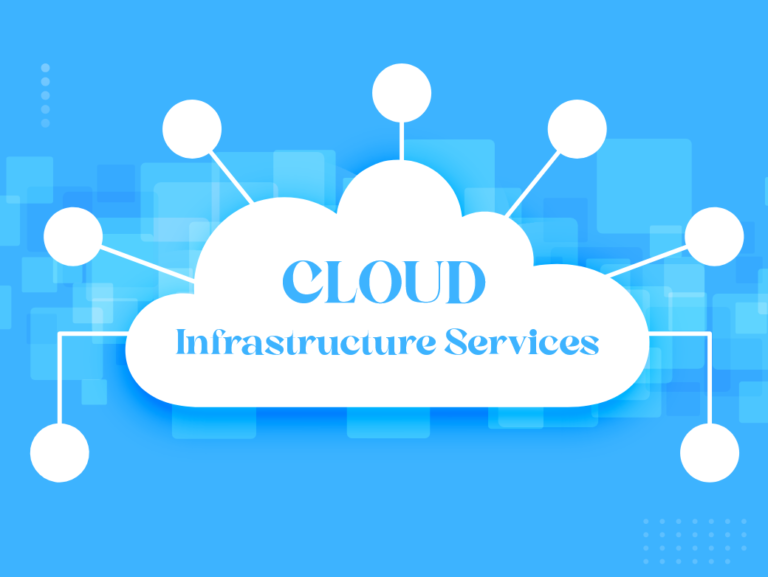Cloud infrastructure encompasses all the necessary components for cloud computing, such as computing power, networking, storage, and an interface for accessing virtualized resources. Virtual resources in cloud infrastructure replicate the physical components they represent, such as memory, network switches, servers, and storage cluster. They are essential for creating cloud-based applications accessible through the Internet, telecom services, and wide-area networks (WANs). Adopting a cloud infrastructure approach offers advantages like increased flexibility, scalability, and cost savings.
By leveraging cloud infrastructure, organizations can easily access data storage and computing capabilities on demand. Instead of building in-house IT infrastructures or renting data-center space, they can now rent cloud infrastructure and required computing resources from third-party providers. Cloud infrastructure is available for private, public, and hybrid cloud systems and can be obtained through various delivery models offered by cloud providers.
How does Cloud Infrastructure Work?
Cloud platforms and infrastructure employ abstraction techniques like virtualization to separate resources from their underlying physical hardware, making them accessible within the cloud. Through tools like automation and management software, virtual resources are provisioned in cloud environments. This enables users to conveniently access the required resources on demand.
Companies can opt to rent cloud services instead of investing in their own computing infrastructure or data centers. This allows them to avoid the initial expenses and intricacies associated with owning and managing their IT infrastructure. Instead, they only pay for the specific services they utilize, when they need them. Simultaneously, cloud service providers can leverage economies of scale by delivering their services to a diverse customer base, resulting in substantial cost savings.
Cloud infrastructure is typically divided into three key components, which work together to provide cloud services
Computing
This element entails the use of server racks to deliver a wide range of cloud services to different clients and partners.
Networking
To facilitate data transfer both internally and externally, routers and switches play a vital role within the infrastructure.
Storage
An ample amount of storage is essential for cloud infrastructure, often utilizing a combination of hard disks and flash storage technologies.
Cloud Infrastructure as a Service
Cloud Infrastructure as a Service provides access to cloud technology through the internet, utilizing a cloud vendor’s data center. The vendor assumes responsibility for maintaining and managing traditional on-premise hardware, including servers, storage devices, networking, and virtualization. This allows customers to retain control over managing applications, data, middleware, and operating systems.
A cloud Infrastructure as a Service (IaaS) solution offers essential infrastructure services such as network monitoring, security, billing, disaster recovery, and load balancing. It also incorporates advanced automation and orchestration capabilities, simplifying application performance and management. This includes streamlined processes for operating system installation, middleware deployment, virtual machine launching, and workload storage and backups.
Components of Cloud Infrastructure Services
Cloud infrastructure comprises various integrated components that form a unified architecture to support business operations. These components typically include hardware, virtualization, storage, and networking elements, working in harmony within a typical solution.
Hardware
Cloud infrastructure leverages a variety of physical hardware, including networking equipment (like switches, routers, firewalls, and load balancers), storage arrays, backup devices, and servers. These components are strategically dispersed across different geographic locations, creating a robust and interconnected cloud network.
Virtualization
Virtualization separates IT services and functions from hardware. A hypervisor software abstracts the machine’s resources, such as memory, computing power, and storage, enabling the creation of virtual resources. Once allocated into centralized pools, these resources form the basis of cloud infrastructure. Clouds provide convenient self-service access, automatic scaling of infrastructure, and dynamic resource pools.
Storage
Data within a data center is stored across multiple disks in a storage array. Storage management ensures proper backup, removal of outdated backups, and indexing for retrieval in case of storage component failure. Virtualization abstracts storage space, making it accessible as cloud storage. Cloud storage allows for flexible addition or removal of drives, repurposing of hardware, and quick response to changing requirements without the need for separate storage servers.
Network
The network consists of physical wires, switches, routers, and other equipment. VPhysical resources serve as the foundation for creating virtual networks. A typical cloud network configuration includes multiple subnetworks with varying visibility levels. Clouds enable the creation of virtual local area networks (VLANs) and the assignment of static and/or dynamic addresses to network resources. Cloud resources are delivered to users over networks like the Internet or intranet, enabling remote access to cloud services and applications on demand.
Types of Cloud Infrastructure
Three major types of cloud infrastructure are explained below
Public Cloud
Public cloud infrastructure is operated and owned by cloud service providers who are not directly affiliated with the users. This infrastructure is accessible to the general public via the Internet. Customers can access and use resources such as computing power, storage, and applications on a shared infrastructure. The infrastructure is scalable, and customers pay for the resources they use.
Private Cloud
Private cloud infrastructure is exclusively used by a single organization, and it can be situated either in the organization’s own data center or hosted by a third-party provider. The infrastructure is designed to meet the specific needs and requirements of the organization. It offers enhanced security, control, and privacy compared to public cloud solutions.
Hybrid Cloud
Hybrid cloud infrastructure integrates features from both public and private clouds. It enables organizations to harness the advantages of both environments. Organizations can use a private cloud for sensitive or critical data and applications while utilizing the public cloud for scalability, cost-effectiveness, and additional resources. Hybrid cloud infrastructure enables seamless data and application integration between the two environments.
Delivery Models for Cloud Infrastructure
Cloud infrastructure can be delivered through three standard models:
Infrastructure-as-a-Service (IaaS)
Cloud Infrastructure as a Service (IaaS) offers organizations the necessary physical hardware and virtualized operating system to support the provision of cloud services. Typically, this service model involves a monthly fee based on the computing power utilized for running the cloud software. Prominent providers of cloud IaaS include Amazon EC2 and Google Compute Engine.
Platform-as-a-Service (PaaS)
Cloud Platform as a Service (PaaS) empowers organizations by providing them with networked computers functioning within a hosted environment. This service model often includes supplementary development assistance. Organizations utilizing PaaS gain advantages such as automated data backups and the ability to scale dynamically. Real-world examples of PaaS include Google App Engine and Cloud Foundry.
Software-as-a-Service (SaaS)
Cloud Software as a Service (SaaS) delivers cloud-based software applications to customers through a network server, accessible via a web browser. This service model usually involves a subscription-based payment structure. Popular examples of cloud SaaS models include Salesforce, Google Workspace, and Office 365.
What are the business benefits of cloud infrastructure?
The business also benefits from cloud infrastructure
Flexibility and scalability
Cloud infrastructure provides businesses with the ability to scale their resources up or down instantly to meet changing demands. It offers unlimited storage space and flexible resource allocation.
Business continuity
Data stored in the cloud is automatically backed up and mirrored across multiple servers or locations. In the event of a server failure, data remains safe and accessible, ensuring business continuity.
Cost efficiency
Cloud infrastructure operates on pay-per-use or consumption-based models, allowing businesses to only pay for the resources they use. This offers cost controls, and real-time visibility, and eliminates the need for upfront investments in hardware.
Improved collaboration
Cloud infrastructure enables seamless collaboration among teams and communities located in different places. It facilitates the sharing and access of files, promoting collaboration and enhancing productivity.
Automatic software updates
Cloud service providers regularly update and maintain the infrastructure, including security patches and software upgrades. This ensures businesses have access to the latest features and benefit from continuous improvements without manual intervention.
Enhanced mobility
With cloud infrastructure, employees can access data and applications from any location, at any time, and using any device. This mobility empowers remote work, increases productivity, and enables businesses to operate efficiently in a mobile workforce environment.
Improved user experience
Cloud infrastructure delivers high service levels, reduces service outages, and enhances the overall customer experience. It provides reliable and accessible services, ensuring smooth operations and customer satisfaction.
Pros and Cons of Cloud Infrastructure Services
Pros
Data center transformation
Upgrading your current data center infrastructure and applications through migration to cloud-based Infrastructure as a Service (IaaS) or Platform as a Service (PaaS). This modernization process enhances scalability, elasticity, redundancy, security, cost-efficiency, standardization, and productivity, resulting in added value.
Agile engineering environments
Leveraging IaaS or PaaS to optimize the engineering value chain, encompassing development, testing, and operations. This approach eliminates inefficiencies, improves the quality and speed of results, and reduces costs. Implementing a rich DevOps methodology creates cohesive workflows, reducing duplication of efforts, conflicts, and uncertainties regarding resource availability. The result is increased productivity and reduced infrastructure expenses.
Resilient web platforms
Migrating web applications and websites to the cloud and adopting IaaS/PaaS to enhance user experience, accelerate feature rollouts, reduce infrastructure costs, and improve performance and availability. Conducting architecture and performance assessments, addressing gaps, and implementing tools, technologies, and strategies facilitate efficient migration and ensure optimal, resilient, and scalable performance post-migration.
Intelligent data platforms
Creating cloud-based analytics, big data, and IoT solutions to leverage data for innovation, overcome expensive data management, and address security and scalability limitations in existing data infrastructure. By combining cutting-edge technologies with cloud-based infrastructures and platform services, robust and scalable solutions are developed, enabling efficient business operations and fostering game-changing innovations.
Enterprise apps on the cloud
Migrating commercial off-the-shelf (COTS) enterprise applications to the cloud when scalability, performance issues, lack of standardization, underutilization of resources, or other challenges hinder organizational agility. Conducting a comprehensive assessment, architecting or rearchitecting the solution, planning the migration roadmap, and provisioning the target environment ensures optimum scalability, resilience, and performance.
Workplace cloud solutions
Transitioning desktops and workspace solutions to the cloud to enhance user productivity, minimize helpdesk calls, improve business continuity, expedite feature rollouts, and reduce costs.
Cons
Despite the numerous advantages of cloud infrastructures, it’s important to acknowledge that they are not without their flaws. While the benefits outweigh the drawbacks, it’s essential to consider both sides.
Vendor reliability
The cloud industry is dynamic and continuously evolving. While some cloud service providers excel, others may struggle. Relying solely on one infrastructure puts a business at risk if the vendor faces financial difficulties or undergoes significant changes.
Dependence on connectivity
The performance of cloud infrastructure is heavily reliant on a stable network connection. Any disruptions in internet or intranet connectivity, whether due to technical issues or natural disasters, can lead to downtime and the unavailability of data, software, and applications. A robust and dependable network ensures the fulfillment of business promises and service level agreements (SLAs).
Limited control
When using a cloud infrastructure, organizations often have limited control over their data and resources, as they are primarily managed by the service provider. Business customers may have restricted access to applications, data, and tools stored on the provider’s server, which can impact their desired level of control and customization.
Importance of Cloud Infrastructure
\
In the past, companies had to rely on storing their data and software on local hard drives and servers, which posed scalability challenges. As the volume of data grew or sudden surges in demand occurred, the limitations of this approach became evident, often resulting in server crashes and extra workload for IT teams.
Cloud infrastructure, however, has revolutionized how both businesses and individuals operate. Cloud services have become an integral part of our daily lives, whether it’s updating social media statuses, streaming content, or managing bank accounts. These applications are hosted on cloud platforms and accessed through internet connections, eliminating the need for local installations.
Today, cloud technology empowers businesses to rapidly scale, adapt, and innovate. It enables enhanced agility, streamlined operations, and cost reduction, making it a crucial asset for navigating through crises and fostering sustainable growth. According to our Future Systems research, companies that strategically leverage technology outperform their counterparts financially, with over double the average revenue growth. 95 percent of leaders have embraced advanced cloud services as part of their digital transformation journey.









